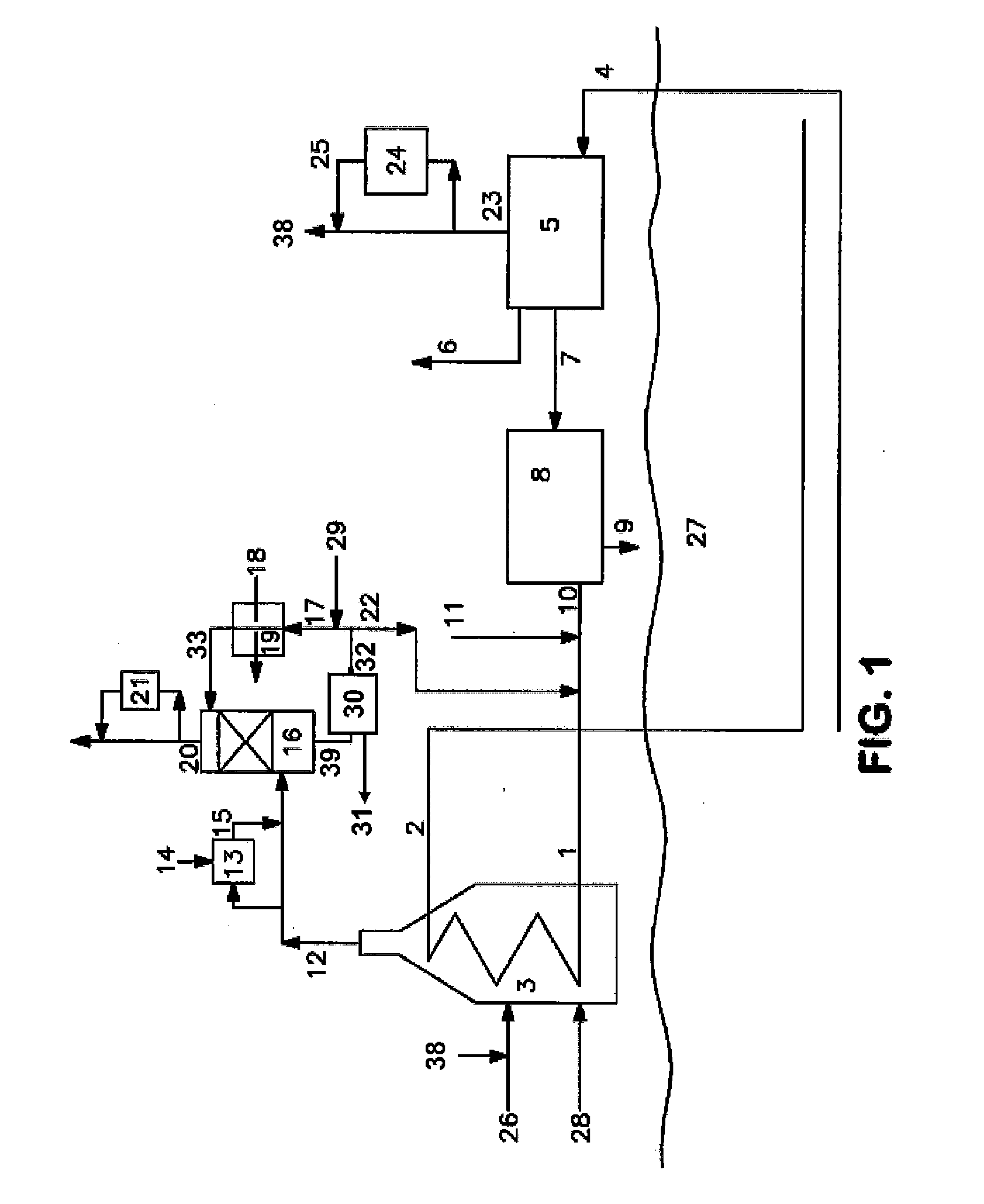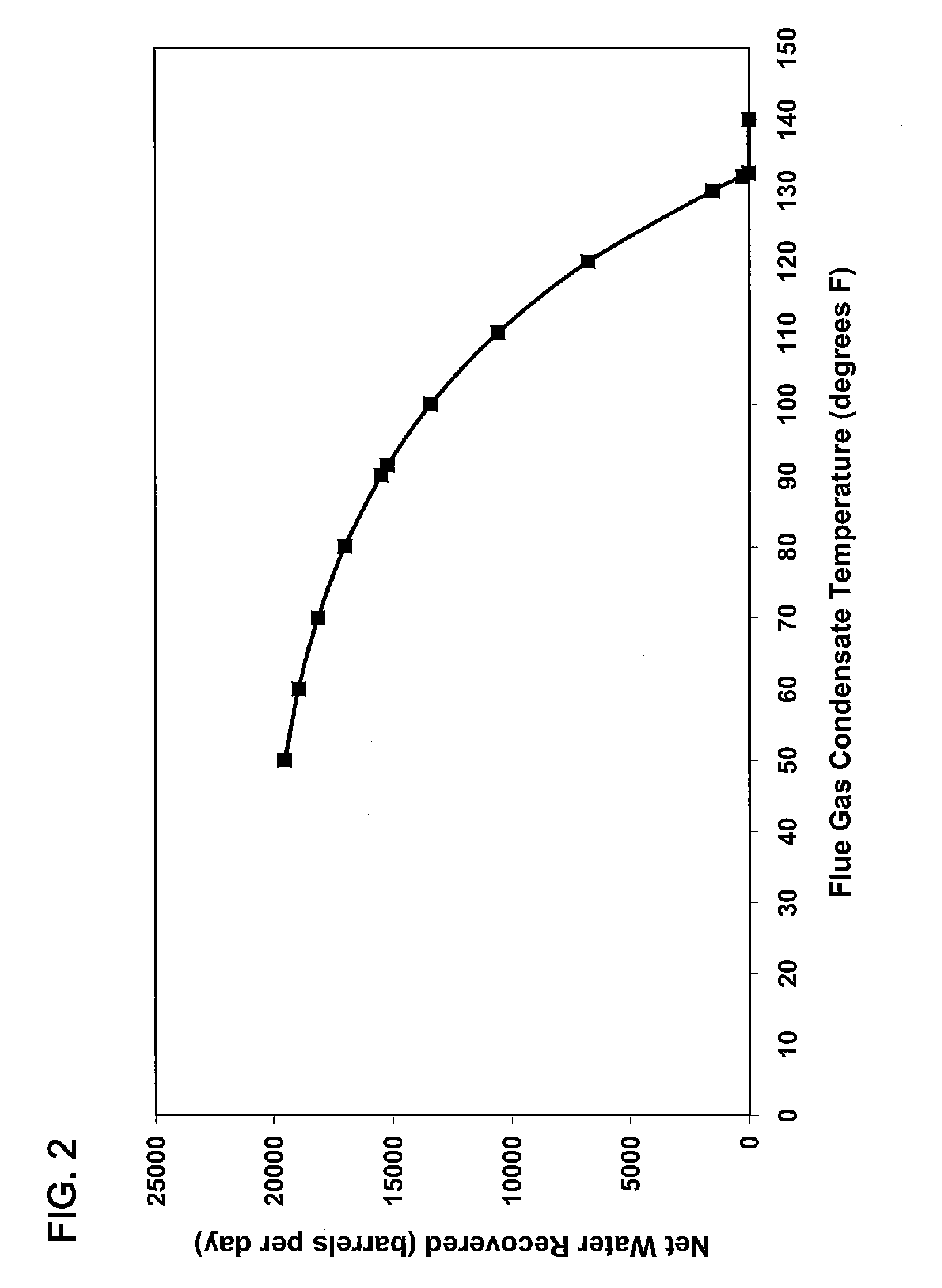Water recovery and acid gas capture from flue gas
- Summary
- Abstract
- Description
- Claims
- Application Information
AI Technical Summary
Benefits of technology
Problems solved by technology
Method used
Image
Examples
example 1
[0044]The presence of carbonate or bicarbonate above a certain threshold concentration in the first aqueous stream can precipitate, potentially fouling (or even plugging) the water flow inside the spray tower. This fouling or plugging can be controlled by any of several methods, including regulating the pH of the spray water (via caustic addition) to control the amount of carbon dioxide absorbed
[0045]It is possible to control the amount of carbon dioxide absorbed into the water spray by regulating the pH. The results of two experiments conducted in our laboratory demonstrate this. In the first experiment, methane gas containing 100 ppm H2S was combusted and passed through a glass column with glass bead packing and water was introduced to cool the flue gas. The water stream from the column (containing the water spray plus the water condensed from the flue gas) was collected in a vessel where it was neutralized with a caustic solution made by adding 1 gram of a 20% (by wt.) NaOH solut...
example 2
[0047]An additional experiment was conducted to further optimize the pH range at which carbon dioxide absorption is maximized. For this experiment, 10 ppm of ethyl mercaptan was added to a methane fuel, and the mixture combusted to make a flue gas. To maintain the spray water at a pH of 6 required the addition of 400% more caustic than was required to maintain a pH of 5. Thus, it was concluded that a pH of around 6 was the threshold for significant absorption of carbon dioxide from flue gas into the spray water.
PUM
| Property | Measurement | Unit |
|---|---|---|
| Fraction | aaaaa | aaaaa |
| Fraction | aaaaa | aaaaa |
| Acidity | aaaaa | aaaaa |
Abstract
Description
Claims
Application Information
 Login to View More
Login to View More - R&D
- Intellectual Property
- Life Sciences
- Materials
- Tech Scout
- Unparalleled Data Quality
- Higher Quality Content
- 60% Fewer Hallucinations
Browse by: Latest US Patents, China's latest patents, Technical Efficacy Thesaurus, Application Domain, Technology Topic, Popular Technical Reports.
© 2025 PatSnap. All rights reserved.Legal|Privacy policy|Modern Slavery Act Transparency Statement|Sitemap|About US| Contact US: help@patsnap.com



